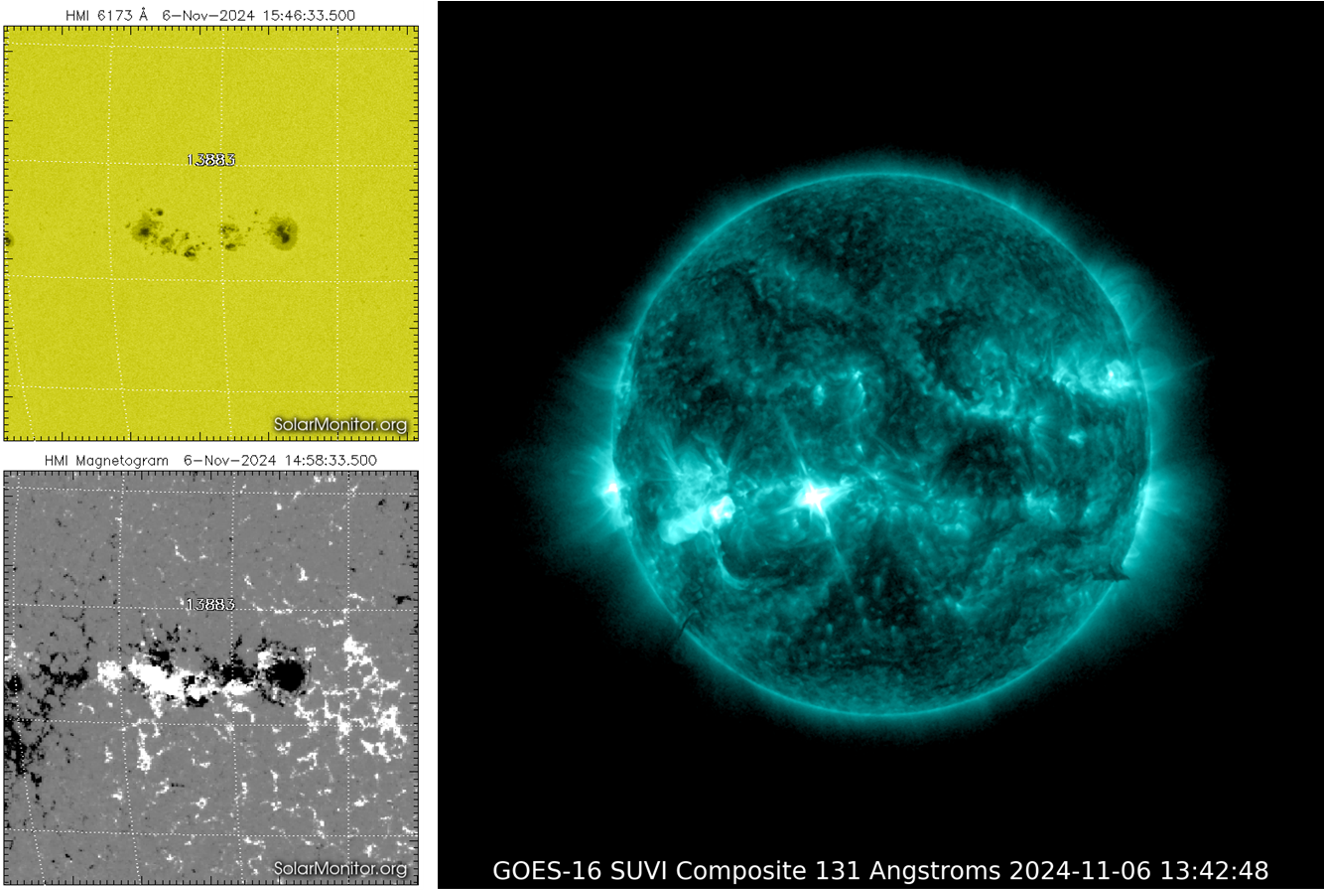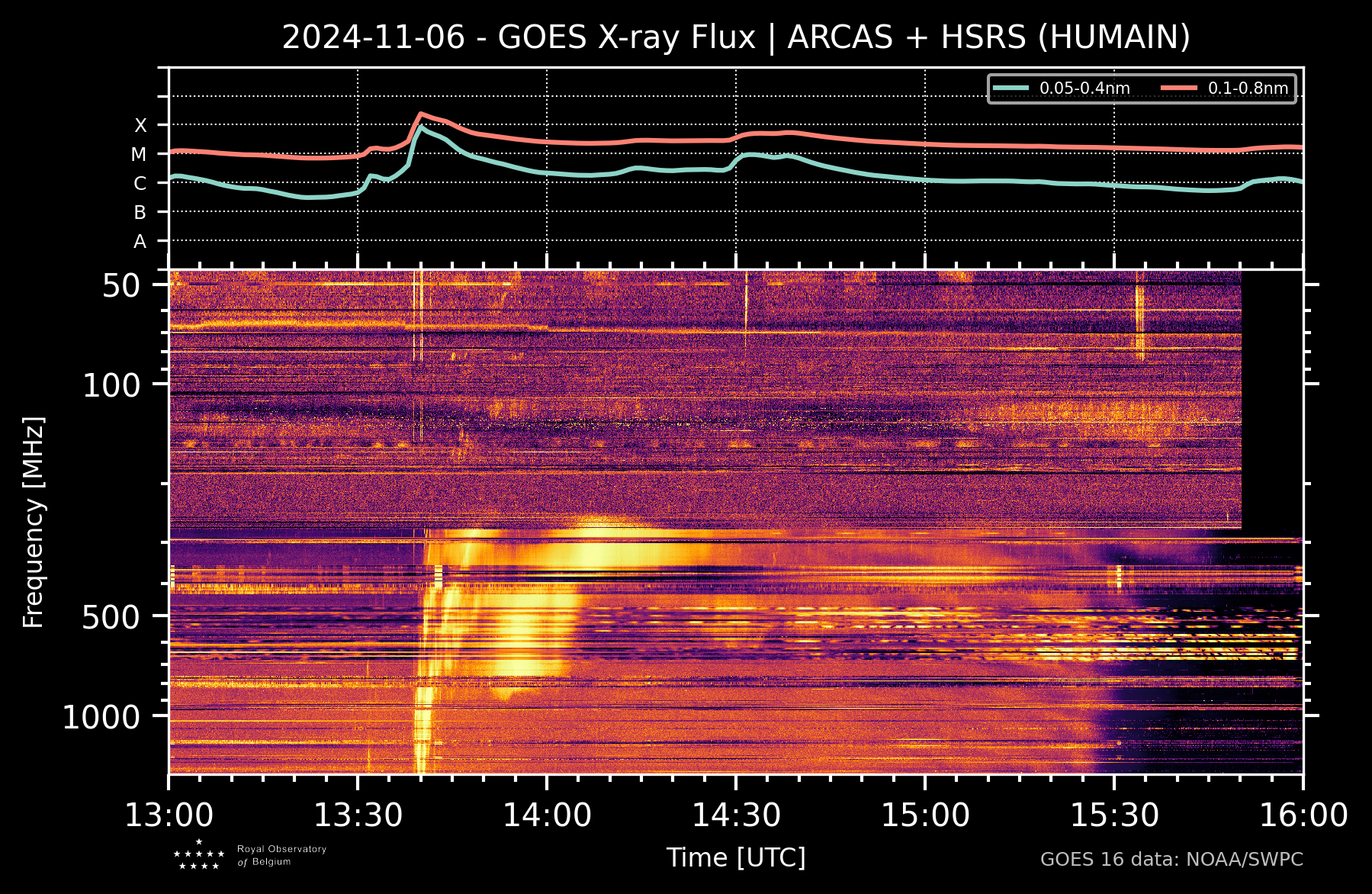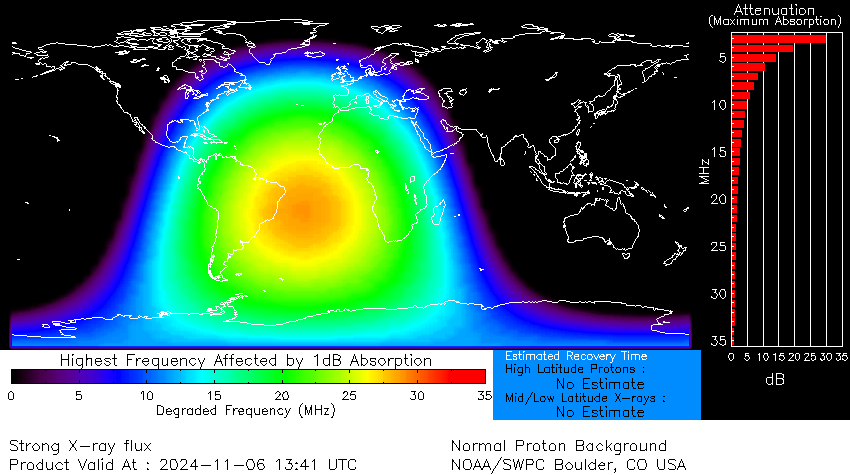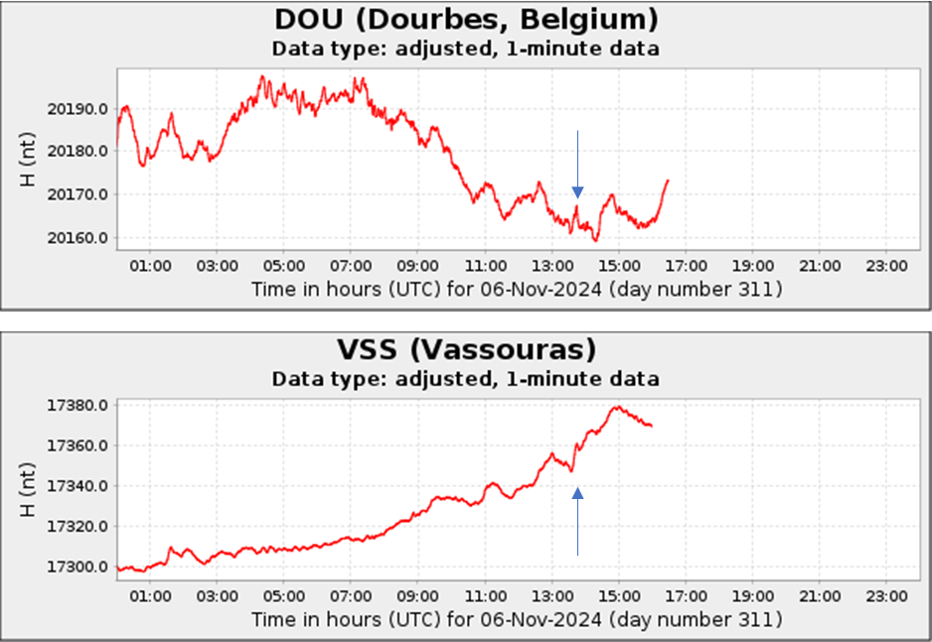An X2.3 flare was produced by NOAA 3883, a rather complex sunspot group near the centre of the visible solar disk. This can be seen in the compilation underneath showing the active region in white light (upper left) and the corresponding magnetogram (lower left). In the latter, the black colour represents a negative magnetic polarity, meaning the magnetic field lines return to the solar interior, whereas the white colour represents a positive magnetic polarity, meaning the magnetic field lines come out of the solar interior. The flare peaked on 6 November at 13:40UTC, and was followed by an M5.3 flare by a region at the southeast solar limb (GOES; chart). The image underneath on the right shows the outlook of the flare in extreme ultraviolet (EUV) near the time of its maximum (GOES/SUVI).

The greater than 10 MeV proton flux remained at background levels. The Humain Radioastronomy Station nicely recorded Type III radio bursts as well as a Type II radio burst associated with the X2 flare, the latter hinting at an associated CME. The spectrogram underneath shows the two bursts: The Type III burst around 13:40UTC (the vertical lines between 200 and 40 MHz), and the Type II burst between 13:40UTC and 13:55UTC, with the initial portion best visible at higher frequencies above 300 MHz, and the end of the burst at 70-40 MHz. Standing-by for coronagraphic images and further analysis by the SIDC forecaster.

The X-class flare affected the lower frequency portion of the High Frequency communication band (HF Com ; 3-30 MHz) mainly over Brazil and the mid- to south Atlantic Ocean. This can be seen on the D-RAP map underneath (NOAA/SWPC). An advisory to civil aviation has been issued (PECASUS). Several magnetometer stations on the daylight side of the Earth, including Dourbes Geophysical Center, registered a small solar flare effect (SFE) of 5-15 nT associated with this flare (Intermagnet (BGS)). See the annotated recordings by Dourbes and by Vassouras (Brazil). An SFE happens when one or more components of the magnetic field strength show a spike around the time of the flare's peak due to ionospheric enhancement by the flare's x-ray and (E)UV radiation (also known as a "magnetic crochet"). For comparison, the recent X9.0 flare of 3 October had a SFE of 50-75 nT (STCE newsitem), whereas the Carrington flare showed an SFE of 110 nT (Cliver & Svalgaard, 2004).







